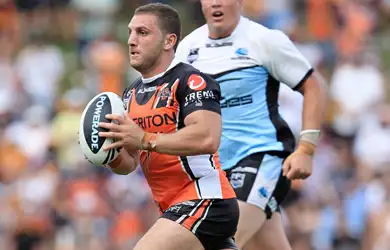NRL players and coaches back interchange review

The RFL and NRL are currently reviewing the rules surrounding the use of interchanges in their respective competitions, with a view to increasing the entertainment on offer to spectators.
The NRL is reportedly ready to reduce the number of interchanges a team can use down to six, which would make a significant change to how the game is played at the top level.
Speed and fitness would become even more important, with outright size looking more of disadvantage when big minutes have to be played.
Cronulla Sharks coach Shane Flanagan thinks the review is a good idea, and will help to reduce the influence of wrestling techniques on the game.
“It will change the whole fabric of the game back to what we used to know it,” Flanagan told Australian media.
“We don’t want players to play with injury, that’s the first priority, but it will change the dynamics. It will add a bit of the gladiator to it, let guys play a lot of time because they can.
“The players are fitter these days, we’ve just got to train them to play longer. Guys like Craig Young and Glenn Lazarus were big men but it didn’t stop them playing 80 minutes.
“If they keep the guidelines in and around the wrestle, it will eliminate it. They’ll get tired and won’t be able to get the numbers in. It will be more about technique and one-on-one tackles.”
Should interchanges be reduced, more space should open for pivot players to exploit tiredness in their opponents.
Wests Tigers skipper Robbie Farah believes that it would be a good thing.
“It’s obviously good news for myself and the other guys who play 80 minutes,” he said.
“I think it will open up the game a bit, take a lot of the wrestling out of the game.
“When fatigue sets in it’s hard to continue to get three players into a tackle and slow the ruck down. We will probably see a lot more second phase as well.
“I think it’s a positive, especially for the little guys in the game, bringing them in a bit more.
“I sense as a hooker in the middle of the field, around that 20-25 minute mark, you start to get some tired players out there.
“But the next set you’ve got two front rowers coming on to finish off the back end of the half. You’re under fatigue, because I’m playing the whole time in the middle of the park, and you’ve got fresh guys coming on.
“You do notice it. Having those big guys out there for longer, it’s going to be beneficial for myself, the hookers and the halves in the middle of the field.”
Sydney Roosters half-back James Maloney, who weighs 83 kilos, would also relish the chance to play against tiring forwards.
“Everyone seems to be getting bigger and stronger – if you take it to eight, I might have more of a chance against the big fellas,” he said.
“It’s probably not a bad thing to make guys push through fatigue. That will split the teams a bit, the sides who excel are the ones who can push themselves and get the job done.”